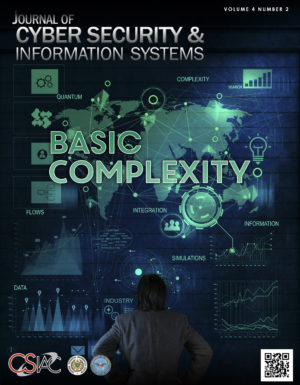an email newsletter released every month highlighting the latest articles, events, technical inquiries, and voices from the community
Summer 2016: Volume 4 Issue 2

Summer 2016: Volume 4 Issue 2
Published: July 25, 2016
Basic Complexity
From inviting complexity into our processes, or dealing with the complexities of quantum keys, to getting back to basics in security and training solutions, this issue of the CSIAC Journal explores unique concepts in advancing productivity and security.

